
The almond is a species of small tree from the genus Prunus, cultivated worldwide for its seed, a culinary nut. Along with the peach, it is classified in the subgenus Amygdalus, distinguished from the other subgenera by corrugations on the shell (endocarp) surrounding the seed.

Prunus is a genus of trees and shrubs, which includes the fruits plums, cherries, peaches, nectarines, apricots, and almonds.

A fruit tree is a tree which bears fruit that is consumed or used by animals and humans — all trees that are flowering plants produce fruit, which are the ripened ovaries of flowers containing one or more seeds. In horticultural usage, the term "fruit tree" is limited to those that provide fruit for human food. Types of fruits are described and defined elsewhere, but would include "fruit" in a culinary sense, as well as some nut-bearing trees, such as walnuts.
Specific replant disease is a malady that manifests itself when susceptible plants such as apples, pears, plums, cherries and roses are placed into soil previously occupied by a related species. The exact causes are not known, but in the first year the new plants will grow poorly. Root systems are weak and may become blackened, and plants may fail to establish properly.

Pollination of fruit trees is required to produce seeds with surrounding fruit. It is the process of moving pollen from the anther to the stigma, either in the same flower or in another flower. Some tree species, including many fruit trees, do not produce fruit from self-pollination, so pollinizer trees are planted in orchards.
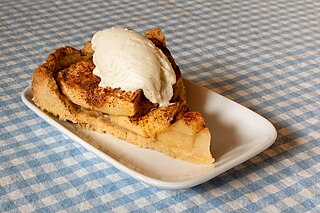
Apple cakes are cakes in which apples feature as a main flavour and ingredient. Such cakes incorporate apples in a variety of forms, including diced, pureed, or stewed, and can include common additions like raisins, nuts, and 'sweet' spices such as cinnamon or nutmeg. They are a common and popular dessert worldwide, thanks to millennia of apple cultivation in Asia and Europe, and their widespread introduction and propagation throughout the Americas during the Columbian Exchange and colonisation. As a result, apple desserts, including cakes, have a huge number of variations.

Terminalia catappa is a large tropical tree in the leadwood tree family, Combretaceae, native to Asia, Australia, the Pacific, Madagascar and Seychelles. Common names in English include country almond, Indian almond, Malabar almond, sea almond, tropical almond, beach almond and false kamani.

Cruncheroos is a whole grain oat breakfast cereal manufactured by Kellogg's, originally available in Canada in two flavors, apple and cinnamon or honey and almonds. As the name states, the cereal was crunchy and O-shaped.

Ajoblanco is a popular Spanish cold soup typical from Granada and Málaga (Andalusia). This dish is made of bread, crushed almonds, garlic, water, olive oil, salt and sometimes vinegar. It is usually served with grapes or slices of melon. When almonds were not available, for instance during the post-war period, flour from dried beans was used.
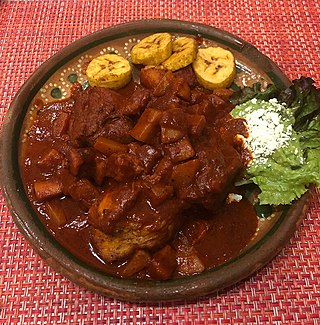
Manchamanteles in Mexican cuisine, is a stew of assorted meat, chili peppers, vegetables, and fruits. A typical recipe for mancha manteles contains chicken and/or pork, chorizo, pineapple, apple, banana, chili peppers, almonds, cinnamon, lard and tomatoes.
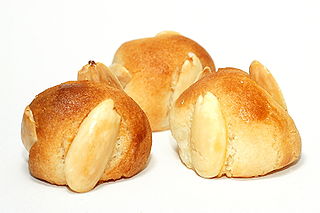
Bethmännchen is a pastry made from marzipan with almond, powdered sugar, rosewater, flour and egg. It is a traditional cookie usually baked for Christmas Day and is widely available in chocolate shops around Frankfurt.
This is a list of articles that are lists of plant diseases.
Phytophthora drechsleri is a plant pathogen with many hosts.
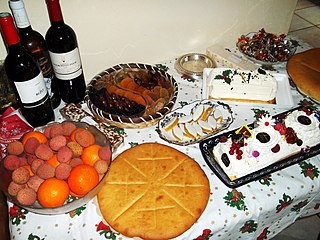
The thirteen desserts are the traditional dessert foods used to celebrate Christmas in the French region of Provence. The "big supper" ends with a ritual 13 desserts, representing Jesus Christ and the 12 apostles. The desserts always number thirteen but the exact items vary by local or familial tradition. The food traditionally is set out Christmas Eve and remains on the table three days until December 27.
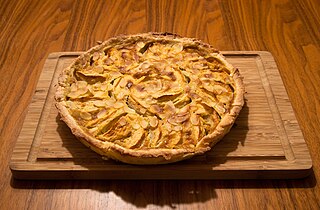
Normandy tart is a shortcrust pastry-based variant of the apple tart made in Normandy filled with apples, sliced almonds and sugar, topped with creamy egg custard and baked until the topping is slightly caramelised. It is also known in French as la Tarte Normande.
This article summarizes different crops, what common fungal problems they have, and how fungicide should be used in order to mitigate damage and crop loss. This page also covers how specific fungal infections affect crops present in the United States.
Anomala insitiva is a species of shining leaf chafer in the family of beetles known as Scarabaeidae.












